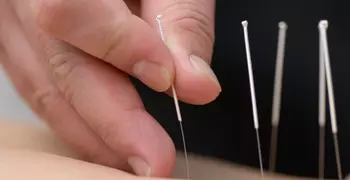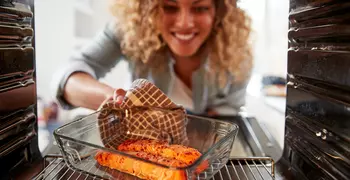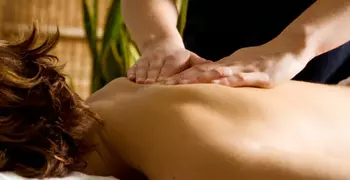Acupuncture and Traditional Chinese Medicine
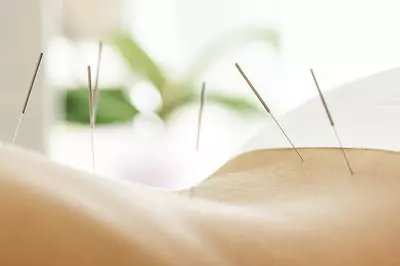
Other TCM Therapies
Chinese herbs
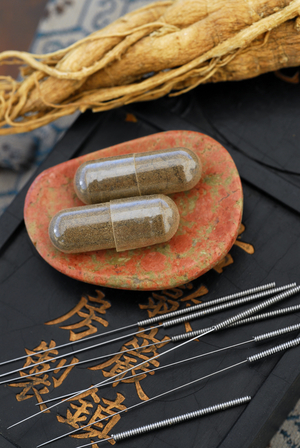 Herbal therapy is perhaps one of the most widely used TCM treatment modalities. TCM relies on herbal therapies both for the treatment of illness and in the optimization of health and prevention of disease.
Herbal therapy is perhaps one of the most widely used TCM treatment modalities. TCM relies on herbal therapies both for the treatment of illness and in the optimization of health and prevention of disease.
There are 5,767 medicinal substances currently in use, including plant, animal, and mineral substances. The materia medica (book on TCM medicinal substances) includes information on the traditional uses, dosages, and contra-indications for each substance, as well as any available information on drug interactions, and any conventional medical research that has been published.
TCM assesses medicinal substances for their effects on particular vital substances, their resonance with particular zang fu organ systems, the channels of the jing luo system into which the substance is said to enter, and the pathogenic factors and patterns of disharmony that the substance is known to address.
How do TCM practitioners use formulations?
TCM practitioners most often use two or more substances in Chinese medicinal formulations to create a balanced, synergistic effect that reflects the holistic nature of the diagnosis.
Although there are literally thousands of traditional herbal formulas for just about every condition imaginable, a formula is almost always modified by the TCM practitioner to suit the subtle nuances of the condition and constitution of the patient, making each formulation highly individualized.
Chinese medicinal formulations are prepared in a number of different ways:
- Chinese herbal decoctions. The most traditional method of preparing an herbal formula in China, decoctions can involve lengthy preparation and result in "teas" infamous for their strong taste and aroma. For these reasons decoctions are not as popular or as widely used in the west.
- Herbal powders, which can be mixed with hot water to make a tea, are more convenient to prepare and use, and are not as pungent as traditional decoctions.
- Chinese Patent Formulas are pre-made herbal formulations in pill or tablet form and are perhaps the most widely used form of Chinese herbal medicine outside of China.
- Syrups, which are soothing preparations for coughs and sore throat, are also a convenient way to administer herbal formulations to children.
- Liniments, salves, compresses and plasters, which are used for external application.Herbal therapy, next to dietary therapy, is perhaps the most widely used TCM treatment modality. TCM relies on herbal therapies both for the treatment of illness and in the optimization of health and prevention of disease.
Cupping
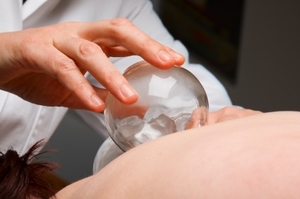 Cupping applies suction to the surface of the body to draw out pathogenic factors or to invigorate the flow of Qi at the surface of the body.
Cupping applies suction to the surface of the body to draw out pathogenic factors or to invigorate the flow of Qi at the surface of the body.
Cupping is usually done by inserting a flame into a small glass cup to remove the air and create a vacuum. The cup is then deftly inverted onto the surface of the body where the cup is held firmly in place by the suction created by the vacuum effect. This method is called "fire cupping." There are also specially designed cups fitted with air lock valves that allow practitioners to remove the air with a hand-held pump.
Frequently, the practitioner will apply a lubricant to the skin before placing the cups, and then move the cups back and forth across certain area of the body. This combines the effects of cupping with dermal friction therapy (gua sha) and is called "sliding cup" technique.
Cupping is frequently used to treat early stage colds and flu, trauma, and muscle pain, especially in the back and shoulders.
Does it leave marks?
Cupping, like gua sha, leaves distinctive marks on the skin. While this is not harmful or painful, the markings are unsightly (resembling, as many patients describe them, "giant hickies and massive rug burns"). When cupping or gua sha is used on children, it is not uncommon for well-meaning child-care providers to mistake the markings as child abuse.
Understandably, TCM practitioners now provide their patients with informed consent information prior to the use of this therapy.
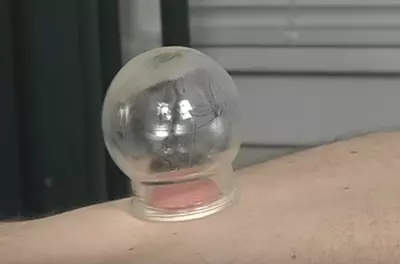
Cupping video
Watch this video to see an example of cupping.
Dermal friction
Dermal friction therapy (called "gua sha" and pronounced "gwa shaw") is a method that involves increasing circulation at the surface of the skin by means of "scraping" the skin vigorously with a blunt edged object.
TCM practitioners usually use dermal friction therapy on the back, neck and shoulders, or the fleshy part of the limbs. The practitioner will often first apply a lubricant, such as sesame oil, Vaseline, or tiger balm, to the skin before scraping the area with the smooth, blunt edge of an object, such as a coin or the lip of a juice glass (a ceramic soup spoon is traditionally used in Asia).
Dermal friction therapy is usually done along one or more of the acupuncture channels, in a direction away from the center of the body, in short brisk strokes until the surface of the skin is well reddened, but not broken.
When is it used?
Practitioners use dermal friction as a way of treating early stage colds and flu, muscle pain, headache, and fever. It is also frequently used as a home remedy in the treatment of fevers associated with colds and flu, and is especially favored in the treatment of children.
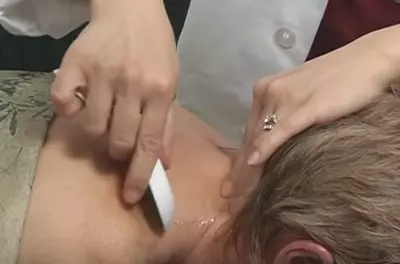
Gua sha video
Watch this video to see an example of dermal friction treatment.
Dietary therapies
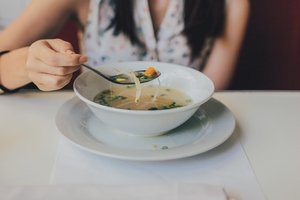 Dietary considerations have always held central importance in Chinese medicine. Sun Si Miao, the great Tang dynasty physician, advised doctors to tend first to their patient's diet and lifestyle before considering other forms of intervention. He considered diet a precious opportunity for safeguarding good health and preventing disease. Diet has held center stage in Chinese medicine ever since.
Dietary considerations have always held central importance in Chinese medicine. Sun Si Miao, the great Tang dynasty physician, advised doctors to tend first to their patient's diet and lifestyle before considering other forms of intervention. He considered diet a precious opportunity for safeguarding good health and preventing disease. Diet has held center stage in Chinese medicine ever since.
By adjusting a patient's diet, it is possible to influence the dynamics of yin and yang. This allows the Traditional Chinese Medicine practitioner to use foods and other substances to help a patient maintain health and prevent disease, as well as to treat disharmonies when they occur.
It is very common for a practitioner to educate patients on how to use food. Dietary advice is always individualized according to the patient's age, sex, and constitution, pattern diagnosis, activity level, environment, and the season of the year.
Moxibustion
Moxibustion is a form of heat therapy in which dried plant materials called "moxa" are burned on or very near the surface of the skin. The intention is to warm and invigorate the flow of Qi in the body and dispel certain pathogenic influences.
Moxa is usually made from the dried leafy material of Chinese mugwort (Artemesia argyi or A.vlugaris), but it can be made of other substances as well.
What exactly does the practitioner do?
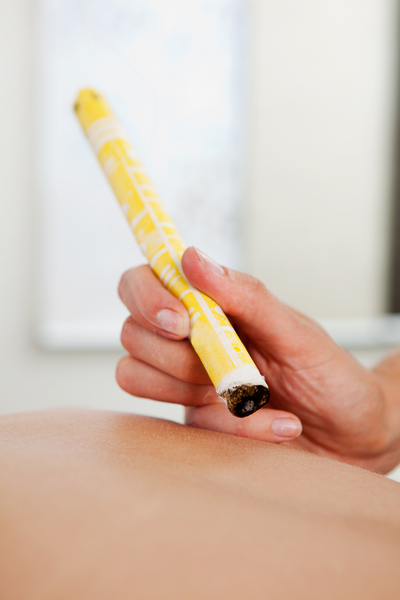 In the U.S., practitioners generally hold a burning moxa stick close to, but not touching, the surface of the skin.
In the U.S., practitioners generally hold a burning moxa stick close to, but not touching, the surface of the skin.
In this method, the moxa material is compressed into a stick or pole, looking not unlike an oversized cigar that can be lit and allowed to smolder, producing a unique form of very penetrating heat.
The smoldering moxa stick is held over specific areas, often, though not always, corresponding to certain acupuncture points. The glowing end of the moxa stick is held about an inch or two above the surface of the skin until the area reddens and becomes suffused with warmth.
What can I expect to feel?
It is not uncommon for patients receiving moxibustion to report a sudden flooding of warmth that quickly radiates along a specific pathway (usually corresponding with the jing luo channel that is being treated) away from the site of application. This is a good result, as it indicates the arrival of the Qi and signals that the flow of Qi and xue has been freed in the channel.
When is moxibustion used?
Moxibustion is used for:
- Pain due to injury or arthritis, especially in "cold" patterns where the pain naturally feels better with the application of heat
- Digestive problems and irregular elimination
- Gynecological and obstetrical conditions, including breech presentation in late term pregnancy
- Protection against cold and flu strains
Practitioners often do both acupuncture and moxibustion in the same clinic session when appropriate to the diagnosis and treatment strategy. Practitioners believe that the therapies increase each other's effectiveness when used together.
Unlike acupuncture, which is almost always done by a trained practitioner in a clinic setting, moxibustion can be easily used at home. It is not uncommon for Chinese medical practitioners to train their patients to use moxa on themselves to strengthen the effect of the clinical sessions between appointments.
What does it smell like?
There is a small inconvenience associated with moxibustion: the smoke and odor. Although there are so-called smokeless varieties of moxa, the preferred true moxa (made from mugwort) does produce a lot of smoke when burned. Most TCM clinics are well equipped with a good ventilation and air purification system, so this is not a big problem.
However, the lingering odor produced from burning mugwort unfortunately smells somewhat like marijuana. Most TCM practitioners in the United States, place small signs around their office informing patients and visitors about the true nature of the odor that they may be noticing.
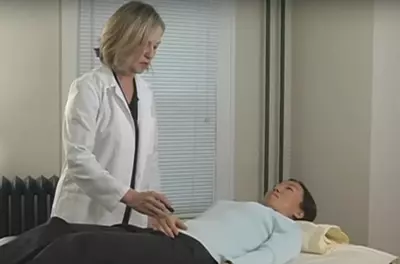
Moxibustion video
Watch this video to see an example of moxibustion.
Tui na
The term tui na (pronounced "twee naw"), which literally means "pinch and pull," refers to a wide range of Traditional Chinese Medicine (TCM) therapeutic massage and body work.
Tui na is not generally used for pleasure and relaxation, but rather as a treatment to address specific patterns of disharmony. As such, practitioners use it for many of the same reasons and according to the same principles as acupuncture. Like acupuncture, TCM uses tui na to harmonize yin and yang in the body by manipulating the Qi in the acupuncture channels.
Tui na includes what is popularly known as "acupressure," where practitioners use finger pressure instead of needles to stimulate the acupuncture points.
When is tui na used?
Tui na is one of the most popular TCM treatment modalities and is frequently used in the treatment of superficial trauma and injury and a wide variety of musculoskeletal problems. Tui na is also often used when acupuncture is inappropriate, such as with children, when it is referred to as "Chinese pediatric massage therapy."
TCM practitioners will frequently encourage and instruct patients to do self massage and certain exercises at home. This solidifies and expands the benefits created during treatment sessions.
Self massage and stretching are considered important aspects of self healthcare.
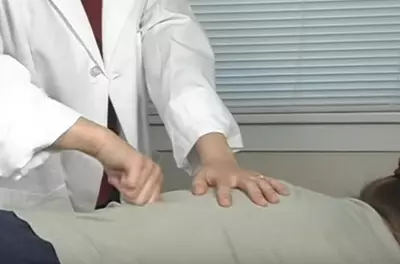
Tui na video
Watch this video to see an example of tui na.
